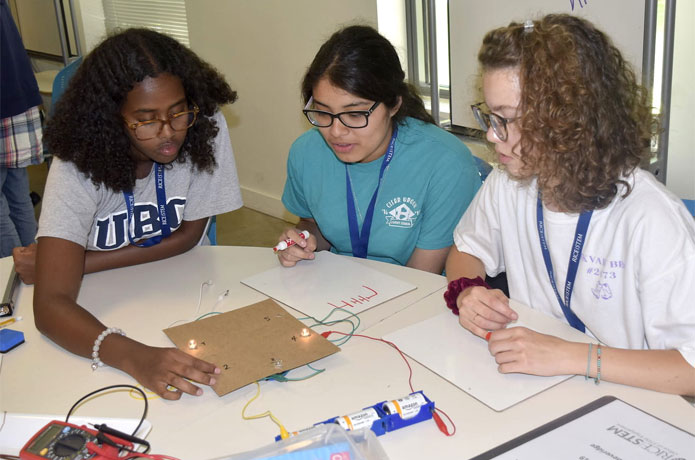Fan Micro Car DIY STEM Kit
$9.99$4.95
Posted on: Mar 8, 2021

Even a small effort up front can boost the abilities and confidence of girls as they anticipate taking challenging science courses.
A long-running summer program at Rice University and elsewhere that trains high school girls in basic physics concepts has proven successful in helping them thrive when they take on full courses the next year.
When leaders of Rice’s two-week day camp looked at similar programs beyond Houston, they found participants scored 3% better in high school physics than their counterparts who did not have the equivalent summer experience.
“That doesn’t seem like a lot, but it’s really hard to move the needle on student outcomes, so 3% is significant,” said Carolyn Nichol, an assistant research professor in the Department of Chemistry and director of the Rice Office of STEM Engagement (R-STEM).
The results are detailed in an open-access study by Nichol, lead author Ericka Lawton, and co-authors Carrie Obenland and Matthew Cushing of R-STEM and Christopher Barr of the Rice Office of Research in the American Physics Society journal Physical Review Physics Education Research.
The study is one of two led and recently released by Nichol. The other analyzes the effect of long-term professional development for teachers in engineering education. That study by Nichol, lead author Christina Crawford of R-STEM and co-author Obenland appears in the Journal of STEM Outreach.
The high school study collected years’ worth of generalized data from participating districts for students who studied chemistry but did not participate in a camp, and the same data for those who did. That gave researchers a baseline to compare results for the same set of students after they all took high school physics.
“There wasn’t a self-selection bias where people could say, ‘Oh, girls who go to a physics camp in June already like physics,’” she said, noting Rice and its counterparts typically recruit students from underserved schools. “The girls who were part of the study were matched so their chemistry scores were the same. We didn’t base this on girls who were already accelerating in science.”
The study was based on a philanthropic effort by Rice alumna and trustee Wanda Gass ’78, an engineer who helped develop the first commercially viable digital signal processor during her career at Texas Instruments. She subsequently founded the nonprofit Design Connect Create to encourage girls to pursue STEM (science, technology, engineering, math) studies.
Design Connect Create runs summer camps for multiple school districts across Texas. Nichol said the study is great validation for the physics program that will ideally lead to similar courses in other science-oriented topics.
“When I talk to these girls at Rice, and often they really don’t want to be here,” she said. “They’re very quiet at the start because for the most part, they are being forced to come by their parents. But by the end, they form really wonderful bonds with the other girls. Within two weeks, they are sharing skills and become trusting of each other.
“I think that’s the real reason they go back and are successful in physics,” Nichol said. “They just get this confidence that they can do it.”
The second study sought to show the value of professional development for teachers whose coursework touches on engineering topics but who are not, themselves, engineers. The researchers followed up with teachers who took the 45-hour graduate level course at Rice in 2018 and 2019 to see how they incorporated engineering into their classrooms.
The study found that, based on a set of attributes for adult self-motivation, teachers showed significant improvement in overall self-efficacy — the belief in their own ability to succeed — in engineering instruction.
“I’m an engineer because my dad was an engineer,” said Nichol, who has a doctorate in chemical engineering. “We want engineering in K-12 classrooms because a lot of kids don’t have role models, and we want them to understand that an engineer is somebody who designs and creates new things.”
She said the program that best exemplifies what Rice offers is the NanoEnvironmental Engineering for Teachers course, which gives participants rigorous hands-on experience working on water sustainability projects. The course, a collaboration with the Rice-based and National Science Foundation-backed Nanotechnology Enabled Water Treatment Center, is also offered at Arizona State and the University of Texas at El Paso.
Lawton is associate director for educational leadership and STEM initiatives, Obenland is a lecturer and associate director for outreach and research, Crawford is associate director for science and engineering and Cushing is executive director of R-STEM. Barr is director of assessment and evaluation of STEM programs in the Office of Research.
 'Science knows no country, because knowledge belongs to humanity, and is the torch which illuminates the world. '
'Science knows no country, because knowledge belongs to humanity, and is the torch which illuminates the world. '